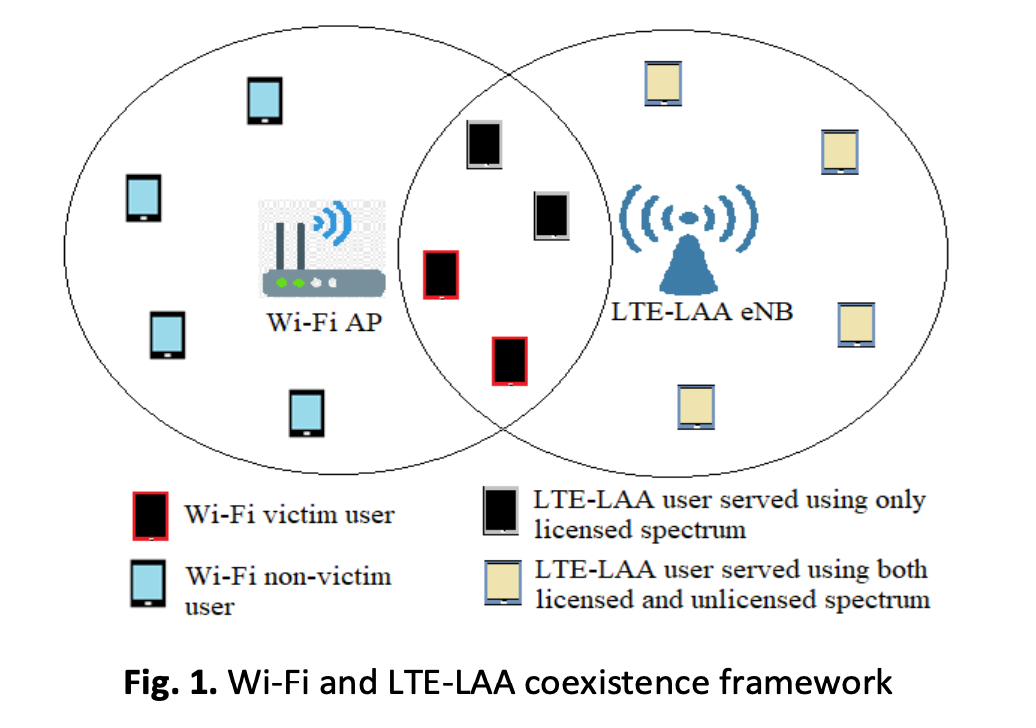Performance Evaluation of Changing Energy Detection Threshold on Wi-Fi and LTE-LAA Coexistence Networks
DOI:
https://doi.org/10.37934/araset.34.2.342351Keywords:
Fair coexistence, license assisted access, LTE, unlicensed spectrum, Wi-FiAbstract
The demand on cellular and Wi-Fi infrastructure has increased exponentially along with the number of mobile devices in use today, thus requiring that both licensed (cellular) and unlicensed (Wi-Fi) spectrum be utilized as efficiently as possible. Licensed-Assisted Access (LAA) based unlicensed spectrum LTE service is seen as an alternative to improve the capability of 4G/5G wireless networks. This approach helps eNodeB to compete with other nodes by using the shared medium and using both licensed and unlicensed bands via carrier aggregation to provide best-effort services. Nevertheless, in order to minimise or prevent performance degradation issues, the hidden node issue over shared medium access networks is a challenge that must be tackled. The performance evaluation of an energy detector is described in this study, which takes into account the energy detection technique for spectrum sensing. The main objective of this research is to develop an energy detection sensing for LTE-LAA and Wi-Fi coexistence networks. The study will proceed with identifying the parameters used such as signal to noise ratio (SNR), energy detection threshold and energy detection probability for energy detection threshold following by derivation of mathematical equation for energy detection threshold. Next, the development of analytical framework for threshold of energy detection in Wi-Fi and LTE-LAA coexistence networks will be developed using MATLAB software. According to our findings, the detection probability will be higher if the detection threshold is dynamically adjusted based on the noise level present during the detection process than it would be if a fixed threshold value were taken into account. The results that obtained from energy detection threshold can achieve fair coexistence between LTE-LAA users and Wi-Fi users and thus, successfully reduces the interference in both coexistence networks.
Downloads





























